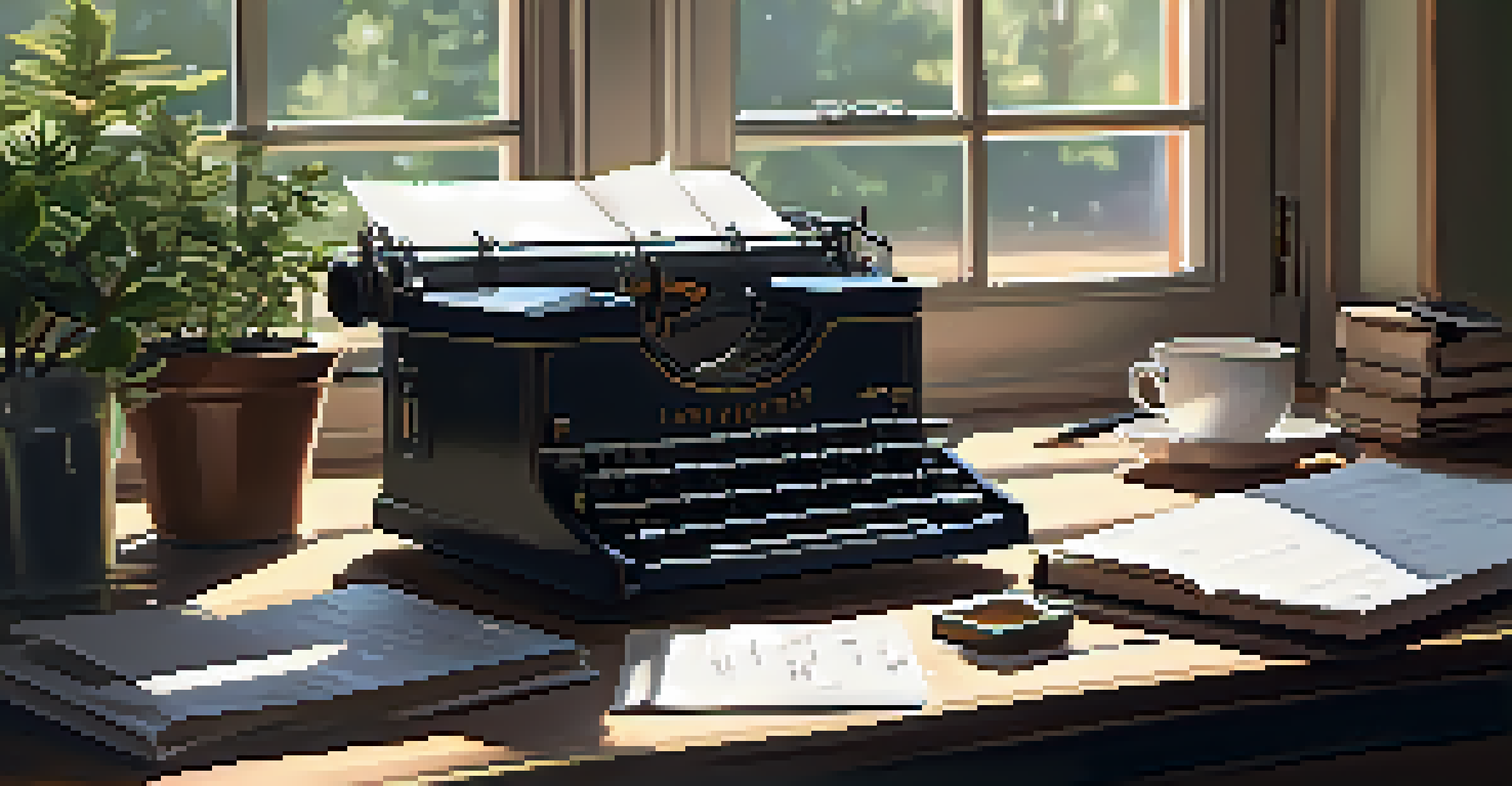The Intersection of Reading and Writing: A Symbiotic Relationship

Understanding the Connection Between Reading and Writing
Reading and writing are often viewed as separate skills, but they actually share a deep, interconnected relationship. When you read extensively, you expose yourself to various writing styles, genres, and vocabularies, which can inspire your own writing. This back-and-forth dynamic creates a rich environment for creativity and expression.
Reading is to the mind what exercise is to the body.
For instance, consider how a poet might read a novel to understand narrative structure. The insights gained can help the poet craft more vivid imagery in their own work. In this way, reading serves as a foundation that supports and enhances one's writing abilities.
Ultimately, this connection highlights that to become a better writer, one must also embrace the art of reading. It’s not just about consuming content; it’s about absorbing the nuances and techniques that can elevate your writing.
Reading as a Tool for Developing Writing Skills
Engaging with diverse literature can significantly sharpen your writing skills. When you read a variety of texts, you encounter different sentence structures, tones, and voices, all of which can influence how you express your thoughts. This exposure allows you to experiment with your own writing style.

Think about how reading fiction can enhance descriptive language. When you immerse yourself in a well-crafted narrative, you start to pick up on how authors create vivid scenes and compelling characters. These techniques can be directly applied to your own writing endeavors.
Reading Enhances Writing Skills
Engaging with diverse literature allows writers to absorb different styles, structures, and techniques that enrich their own writing.
In this way, reading acts as a workshop for writers, providing a safe space to learn and grow. The more you read, the more tools you have at your disposal to craft engaging and effective pieces.
The Role of Writing in Reinforcing Reading Comprehension
Writing can be a powerful tool for reinforcing what you read. When you take the time to write about a piece of literature, whether through analysis or reflection, you deepen your understanding of the material. This process encourages critical thinking and helps you retain important concepts.
Writing is the painting of the voice.
For example, a student who writes a summary of a novel is not just recounting the plot; they are also engaging with the themes and character motivations. This act of writing solidifies their comprehension and allows them to articulate their thoughts more clearly.
Therefore, writing serves as a bridge between reading and understanding, enhancing your ability to connect with texts. This reciprocal relationship ensures that both skills are continually developed and refined.
The Influence of Genre on Writing Techniques
Different genres of reading material can influence your writing techniques in unique ways. For instance, reading poetry can teach you about rhythm and brevity, while reading non-fiction can enhance your ability to argue and present facts clearly. Each genre offers distinct lessons that can be applied to your writing.
Imagine a writer who primarily reads thrillers. They might learn to create suspenseful plots and engaging dialogue. These elements can then enrich their own stories, making them more captivating for readers.
Writing Reinforces Reading Comprehension
Writing about what you read deepens your understanding and retention of the material, bridging the gap between reading and comprehension.
By diversifying your reading list, you open yourself up to a plethora of writing styles and techniques, enriching your own writing voice. This genre exploration fosters versatility and creativity in your work.
The Feedback Loop: How Reading Influences Writing Choices
The feedback loop between reading and writing is essential for growth. As you read, you may find yourself questioning certain choices made by authors, which in turn influences your own writing decisions. This critical engagement helps you develop a more discerning eye.
For instance, if you notice a character in a novel lacks depth, it may prompt you to ensure your own characters are well-rounded and relatable. This reflection leads to conscious choices that enhance the quality of your writing.
Thus, the process of reading becomes an active dialogue with the text, shaping how you approach your own writing. This continuous exchange cultivates a more thoughtful and intentional writing practice.
Building a Reading Habit for Aspiring Writers
Establishing a reading habit is crucial for aspiring writers. Regular reading not only expands your vocabulary but also helps you internalize different writing styles and techniques. This consistent practice can significantly enhance your writing skills over time.
Consider setting aside a specific time each day for reading, even if it’s just a few pages. This small commitment can lead to substantial growth in your writing abilities, as you continually absorb new ideas and concepts.
Develop a Reading Habit
Establishing a consistent reading routine nurtures creativity and significantly enhances writing skills over time.
By making reading a priority, you create a nurturing environment for your creativity to thrive. This habit ultimately lays the groundwork for a successful writing journey.
The Lifelong Journey of Reading and Writing
The relationship between reading and writing is not confined to a specific time or place; it’s a lifelong journey. As you evolve as a reader and writer, your understanding of both crafts deepens, creating a rich tapestry of experiences to draw from. This ongoing process keeps the creative spirit alive.
For many writers, the journey begins in childhood, sparked by a love for stories. This passion often leads to a desire to create their own narratives, showcasing the seamless transition from reader to writer.

Ultimately, embracing both reading and writing as interconnected pursuits can lead to a fulfilling and enriching creative life. This symbiotic relationship encourages continuous learning and growth, ensuring that both skills flourish together.